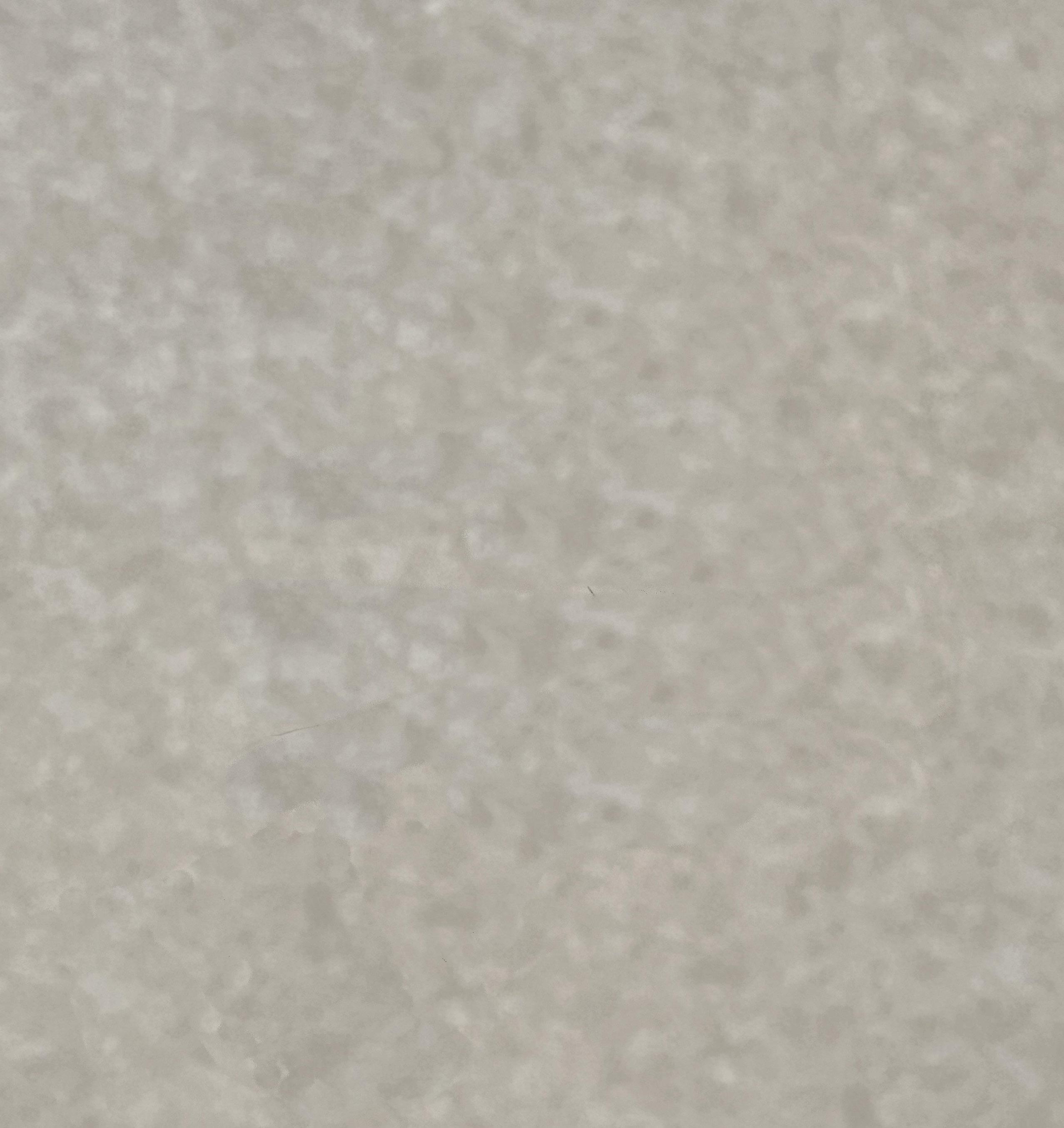The Art and Science of Fly Tying
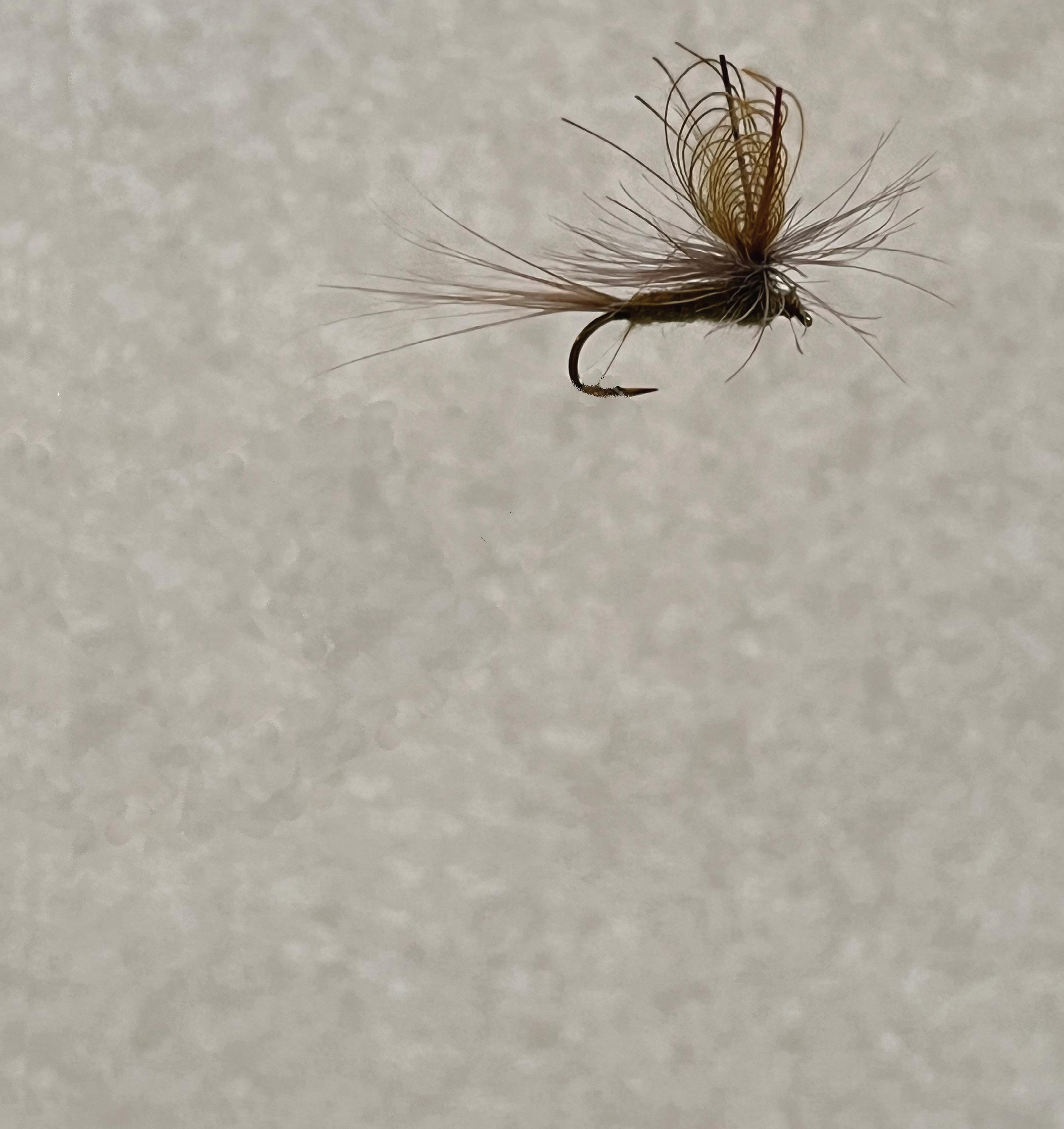 by Elizabeth King
by Elizabeth King
FISHING IS A RELAXING solo hobby for those who are one with both nature and their thoughts. For fly fishermen Bret Quigley and Ted Leonhardt fishing is a hobby, but also so much more. Both men tie their own flies, adding to the pride of successful fly-fishing. “It’s creative,” says Ted, who has been tying his own flies for the last 17 years.
They each got started with the practice because of the high cost to buy a prefabricated fly. “One fly will cost two to three dollars at the store,” says Bret, “but I can tie my own for around 25 cents a piece.” And, he’s been doing just that for the last five years or so. He’s tied hundreds of flies in that time. They’re sorted by stage and style into ten different fly boxes that he takes with him on fishing trips.
“It’s a science,” says Bret of selecting the right fly. “You have to know a lot about insect life cycles; what’s in the water and when.” Fly fishermen learn the river and the environment to decide what fly to use depending on the time of day and time of year. Bret and other fly fishermen call this “match the hatch,” and it’s different across locations and environments.
Early in the spring season, before the flying insects are out and about, trout are feeding primarily on aquatic insects and the larvae, pupa or nymphs that reside in the water. These insects can
be found along the bottom of water sources among the rocks. As they become dislodged by the current, or float to the surface, they become trout breakfast. During the Rocky Mountain summer season, fly fishermen use flies to mimic bugs that sit on the surface of the water or the terrestrial insects that live alongside babbling brooks and mountain streams. These are called dry flies and include a variety of winged insects such as mayflies, damselflies, caddisflies, stoneflies, a variety of beetles and even grasshoppers. Dry flies mimicking these larger insects are a trout favorite.
“You’re trying to see things from the perspective of a fish,” explains Ted. “The best fly may not look exactly like an insect, but the impression it leaves in the water mimics the native insects fish are looking to eat.” Ted’s favorite fishing is along the Yampa River in spots where it’s not too crowded. Bret prefers the privacy of high mountain fishing—hike in, hike out—but the exact locations where he fishes are between him and the fish. He looks for eddies in the river where fish like to watch for a little snack, casting out a few times and then moving up to the next eddy. He often traverses a mile or so of river in a day.
Northwest Colorado offers some of the state’s best fly-fishing. In 2020, a 48-inch, 38-pound Northern pike was caught at Stagecoach Reservoir, setting a new state record. At Stagecoach Reservoir the
best fly-fishing is below the dam and at the inlet. Other popular areas for fly-fishing include the headwaters of the Yampa River, the Elk River (public access at Christina State Wildlife area is just 7 miles north of Steamboat Springs). Up north, Steamboat Lake near the dam and Pearl Lake offer ample opportunities for fly-fishermen and women. For beginners getting their feet wet, the Yampa River in downtown Steamboat Springs has plenty of pike and trout.
Making the perfect flies requires un derstanding of seasons, fish behavior and environment. For those starting out with their own fly tying, talk to fishing guides, state park employees and fishermen to see what is working and when.
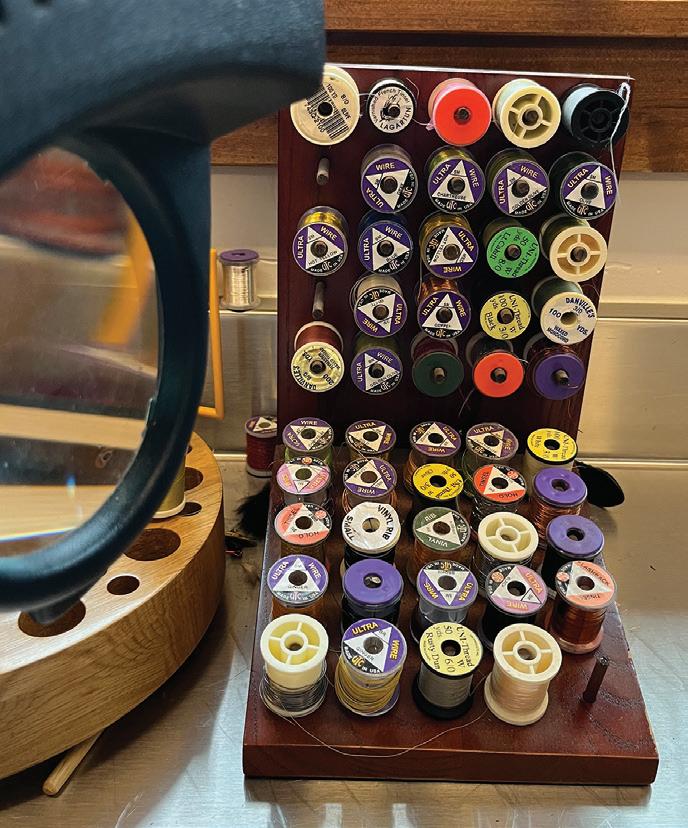
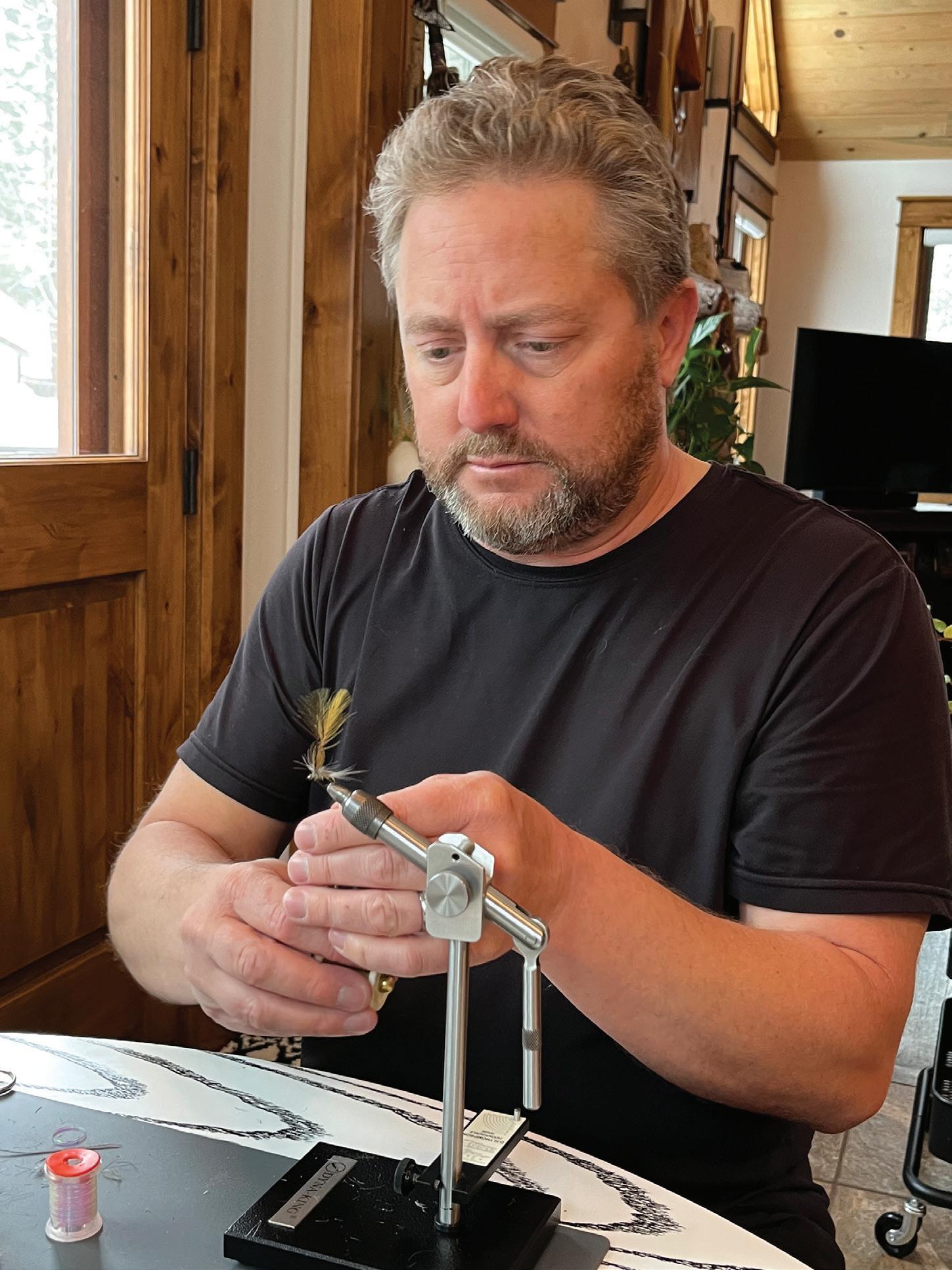
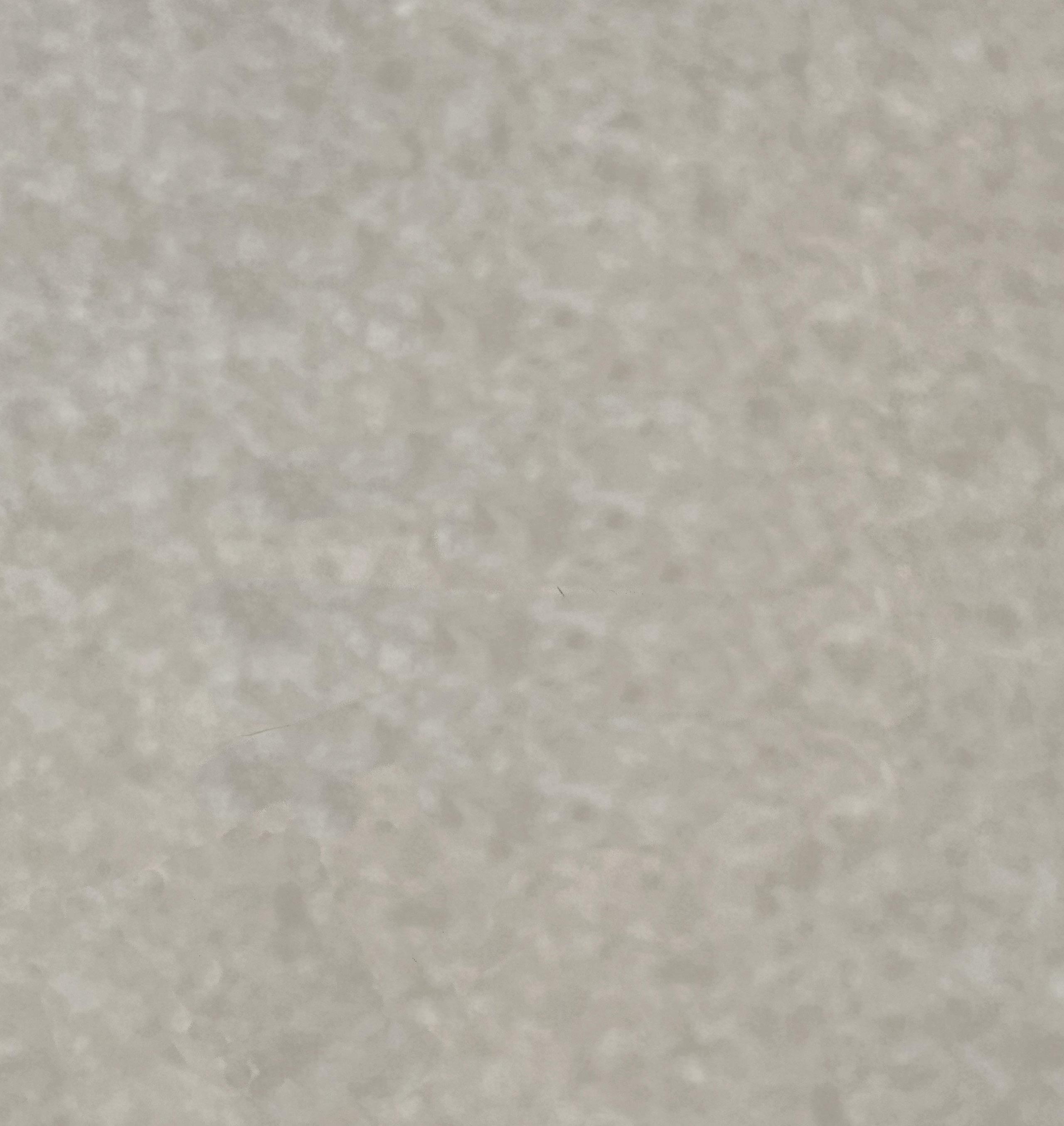 24 Summer 2023
Art with Altitude
24 Summer 2023
Art with Altitude
Fly fishing in Colorado yields mostly trout and pike, with the average trout measuring in at 24 inches. In the winter, some fishermen head south to try their luck with salt water fly fishing. This means building ties to attract fish that are six feet long, fishing from a boat instead of from the shore, and learning about the world those fish live in.
Ted experiments with different techniques, looking for inspiration in the environment, fly fishing books and his supply box. He uses a lot of natural elements when cre ating his ties - elk and moose hair, ostrich and peacock feathers, and a variety of chicken feathers that are bred specifically for use in flies. He also has a variety of synthetic materials like thread, wire and tinsel. When think ing about the creativity involved in fly tying, the Iron Fly competition quickly came to mind for Ted. He’s watched, and even participated in, the competition fly tying event where contestants receive a basket of surprise supplies to turn into a fly. The most off-the-wall item Ted has seen in a basket? A Reese’s Peanut Butter Cup wrapper that took a journey from trash to fly fishing treasure.
When tying, Bret considers what flies he’s been having success with to select the type of fly to make and supplies to use. His supply box is full of colorful thread, vinyl string, feathers,
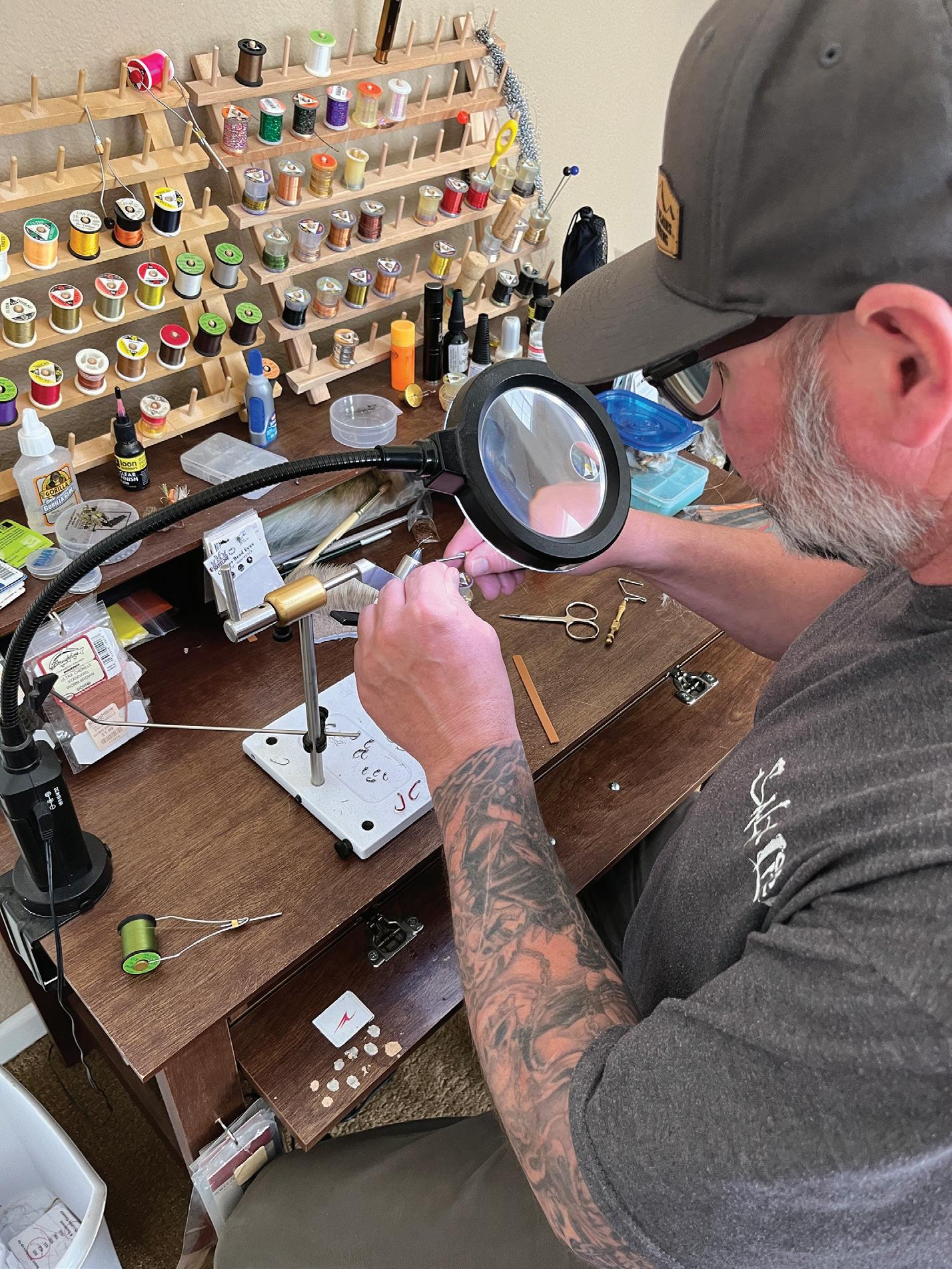
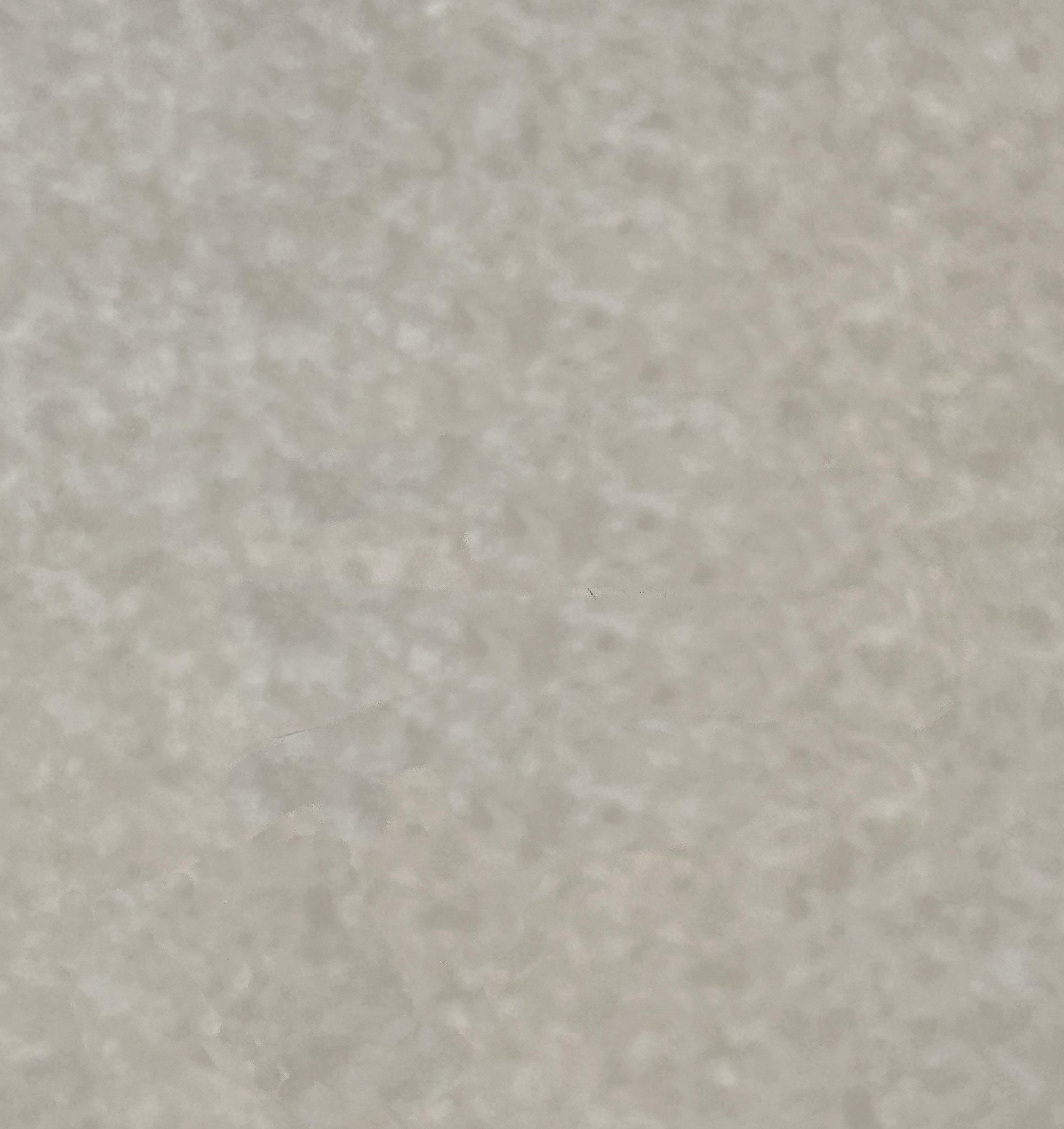
or eyes. He describes fly creation like the layers of a painting. He starts with a hook, selects the components of the fly to achieve the look he’s going for and then wraps it with thread to compile all the layers. If a fly is rejected by the fish, he might even bring it back to his work station to revisit the coloring or shaping to better mimic native insects.
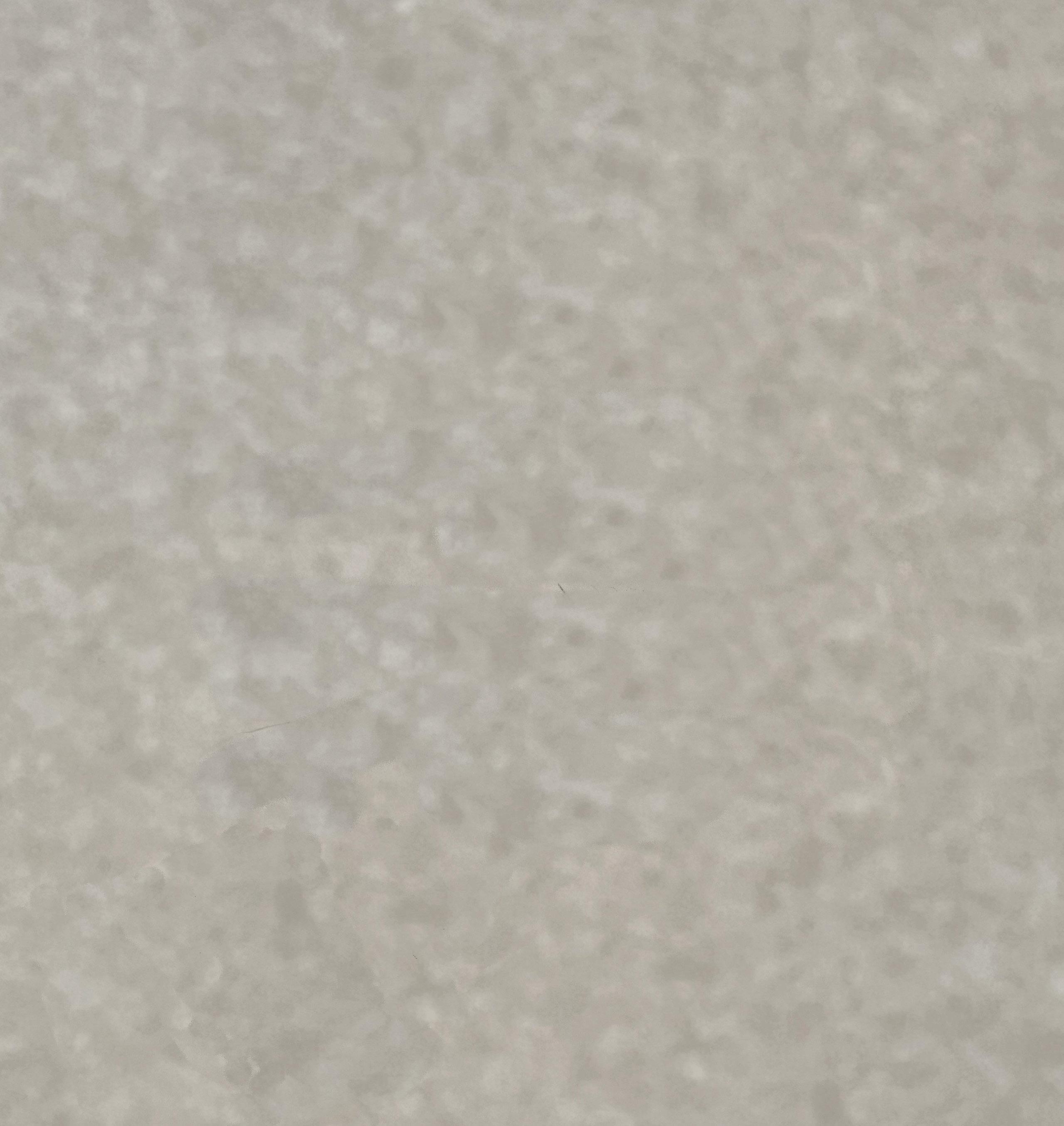
While Bret uses a scientific approach to iterate on his ties, Ted’s process relies more on his experience of trial and error. “It takes time to get good at it,” he says. When Ted began tying flies almost two decades ago, he had a few mentors in the local Fly Fishing Club who helped guide. He also learned a lot from books, which he still references for inspiration, such as Barr’s Flies by John Barr and Trout Flies by Dave Hughes.
There are lots of fly-tiers who will tie something they’ll never use, just because it’s beautiful. But for Bret and Ted, having a tie that works is what is important. For them, tying flies is about the practical application that leads to a successful day of fishing. The creation of flies blends science with art. “There’s no right or wrong, good or bad when it comes to fly tying,” said Ted, but of course the best flies are those that catch fish.
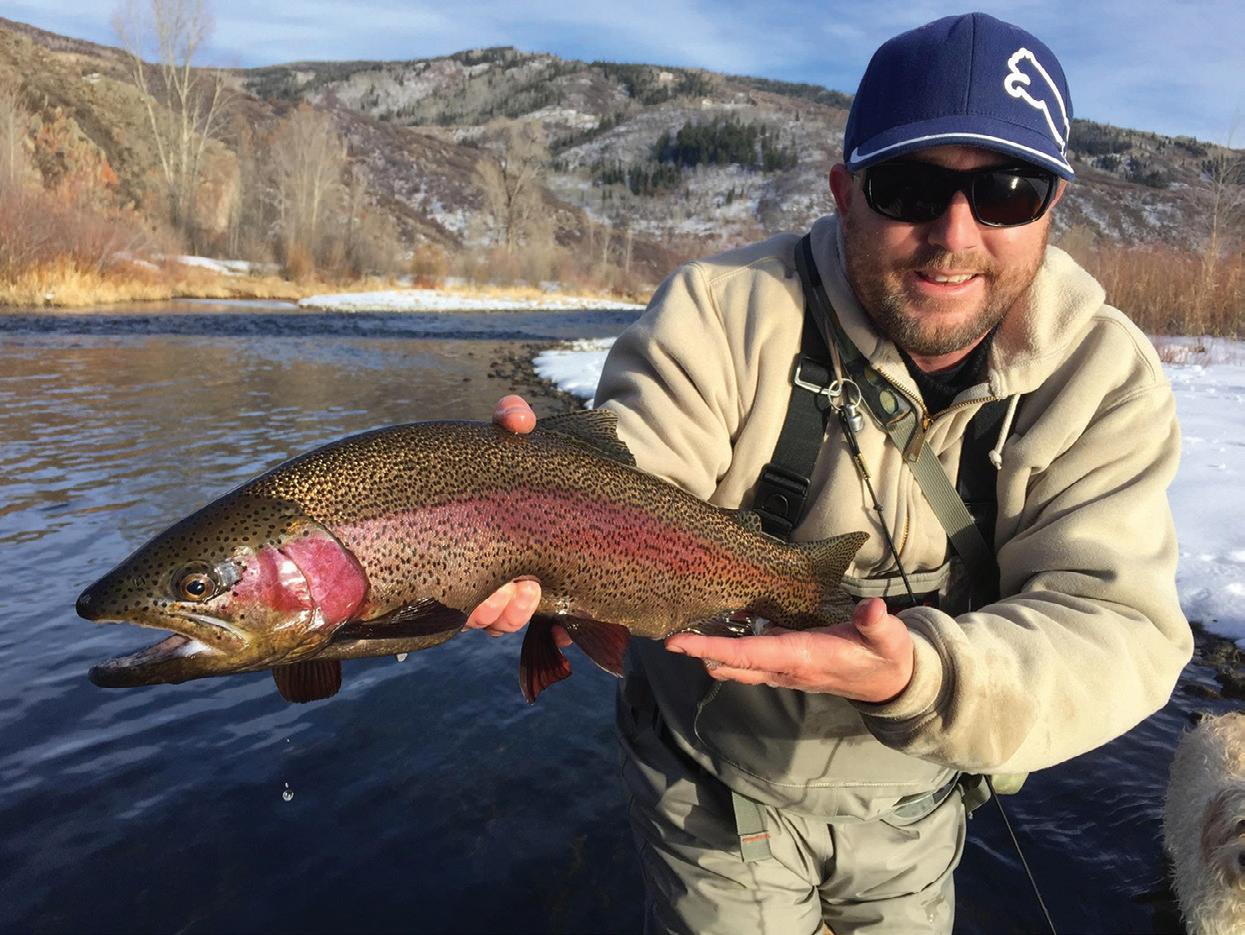
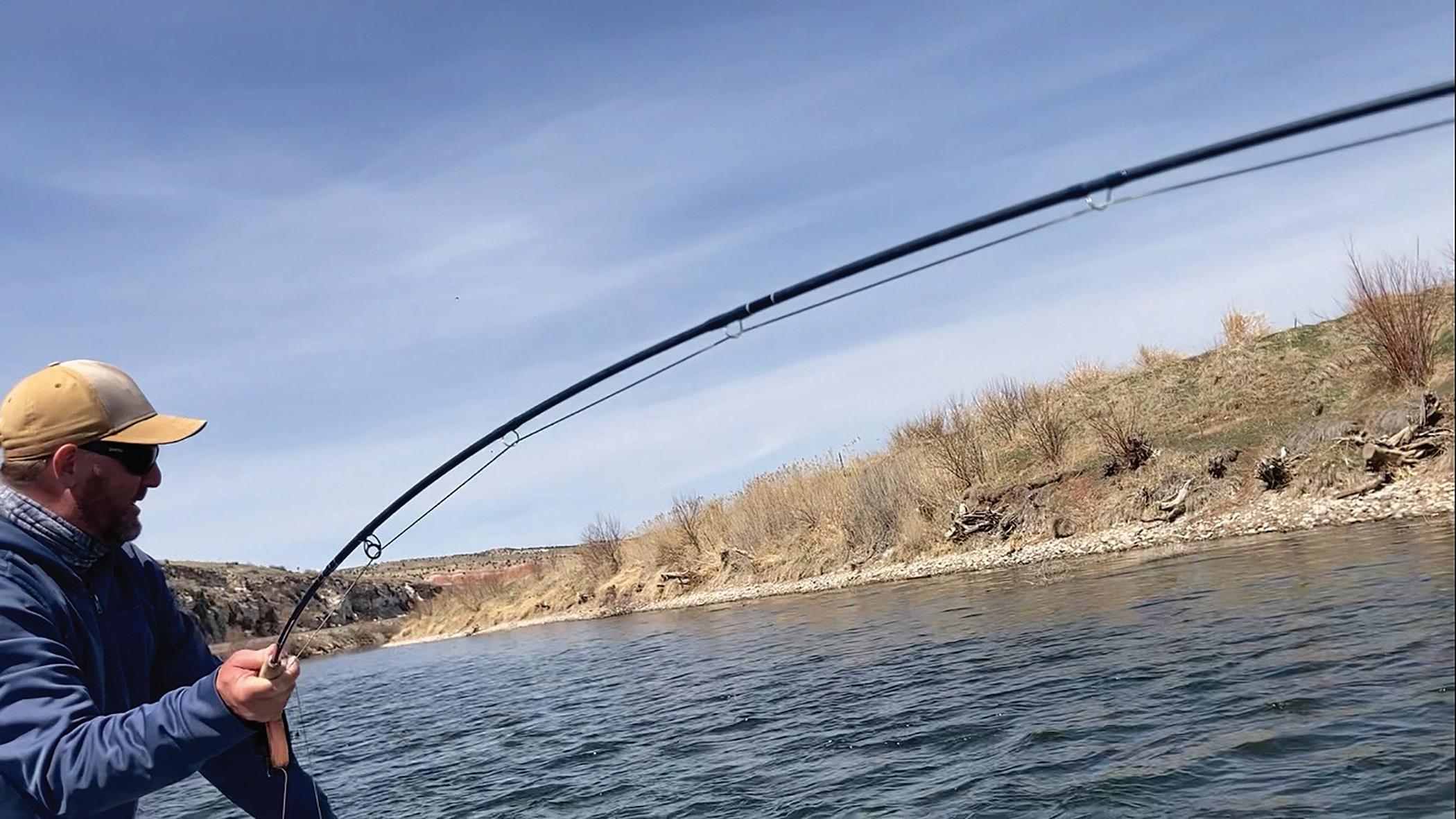

ELEVATE THE ARTS: Take a hike to one of northwest Colorado’s many mountain streams. Sit for a while and watch the river. See what insects you can observe during the different seasons. What colors and shapes make them unique? Learn more about fly tying and see some expertly tied flies by searching YouTube. We recommend searching Iron Fly Competition for an extra dose of excitement and creativity.
Page 23: Fly tied by Ted, courtesy of Barb King
Page 24: Bret tying a fly, courtesy of Barb King
Page 25: Ted’s threads; Ted tying a fly, courtesy of Barb King
Page 26: Ted fishing at his undisclosed spot (on the Yampa); Ted with a Rainbow Trout, courtesy of Ted Leonhardt. Flies tied by Bret, courtesy of Barb King
Page 27: Bret with a Rainbow Trout in Wyoming, courtesy of Bret Quigley
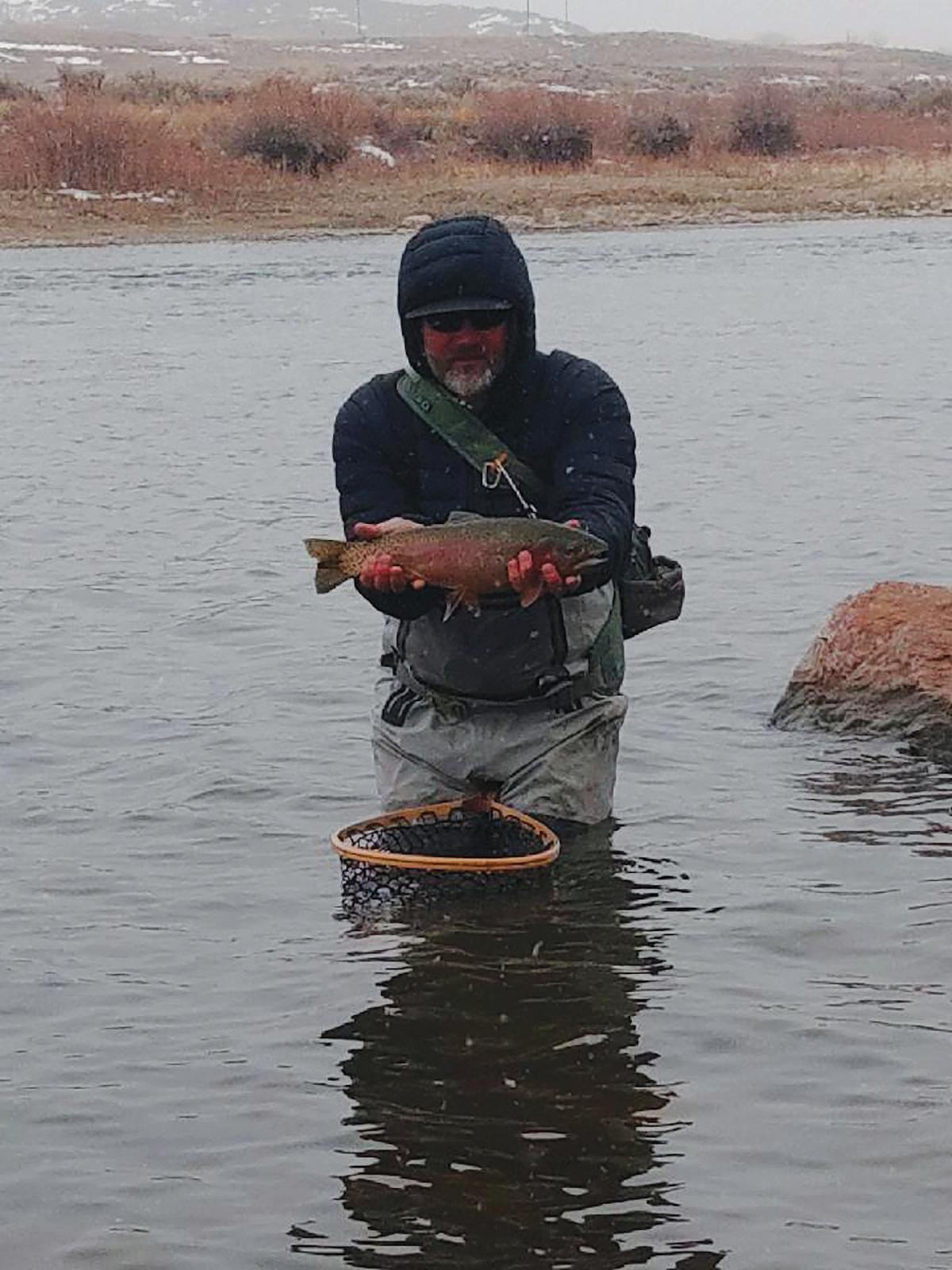
Art with Altitude Summer 2023 27
